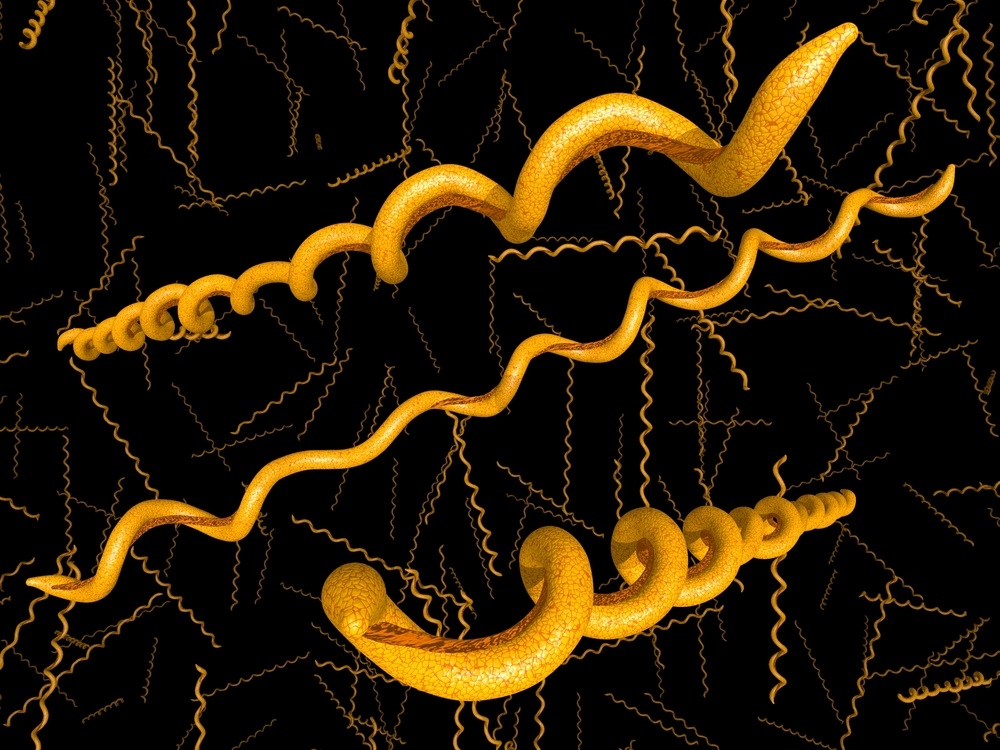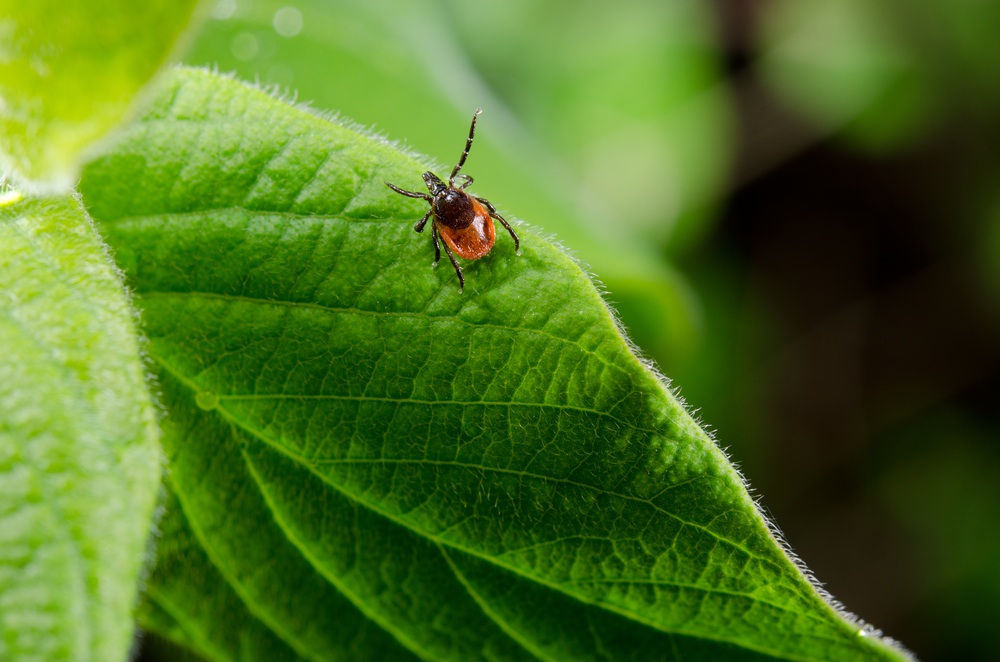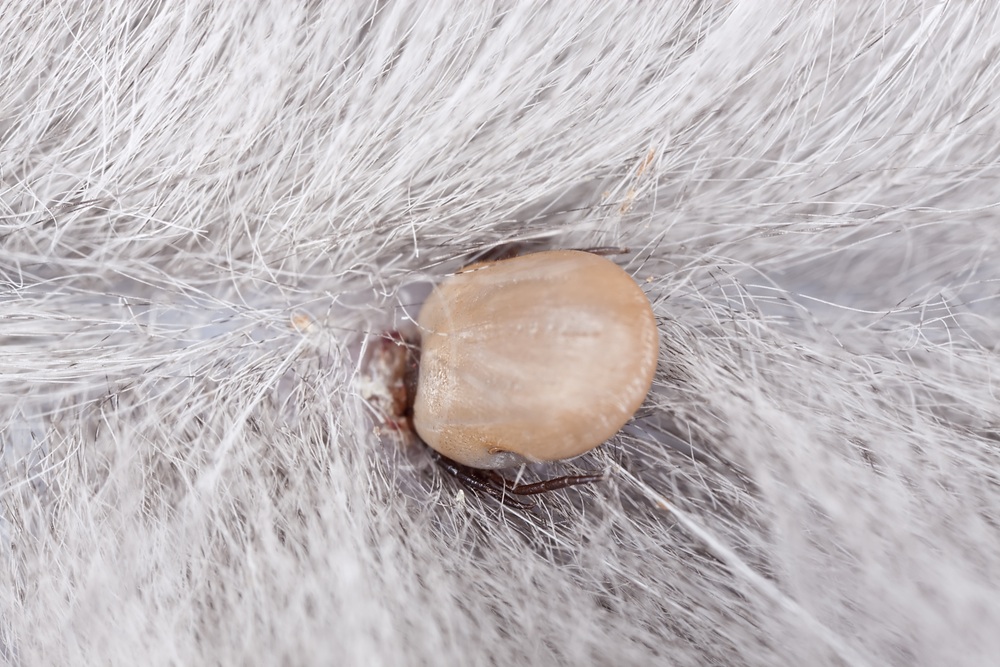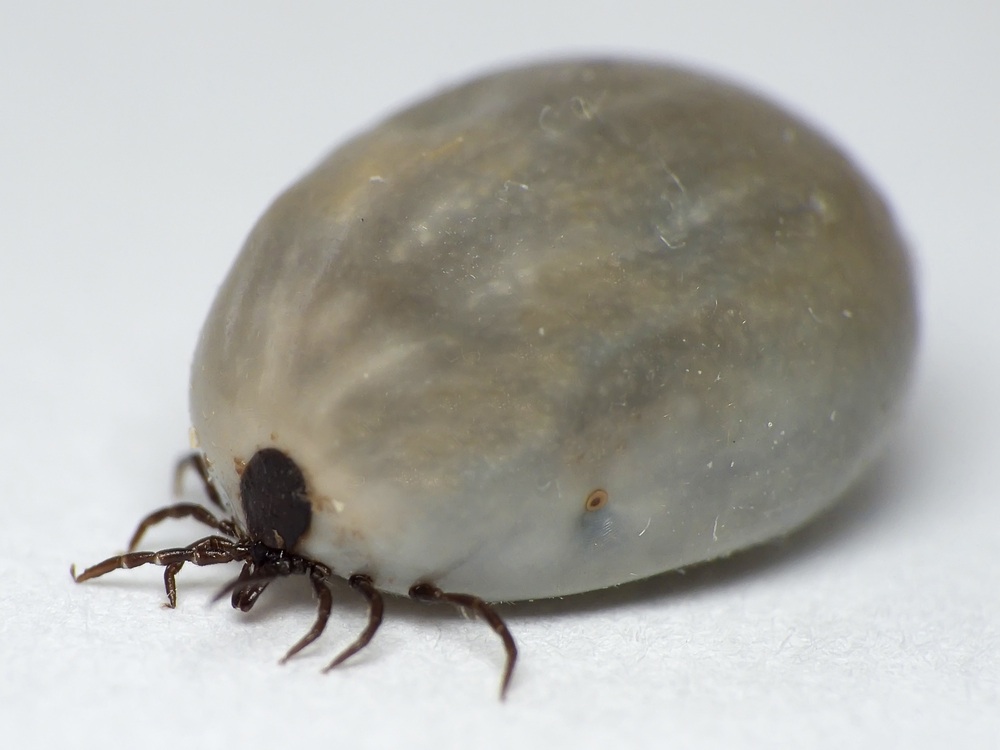Lyme disease: hidden dangers on a country walk

It may seem relatively safe walking your dog in the countryside, but there are a number of unexpected hazards that can be present in these surroundings. They include Lyme disease, which occurs virtually throughout the entire northern hemisphere, outside the tropics. Much still remains to be learnt about this illness, which is spread by a type of tick called Ixodes.
It is more of a problem in certain areas than others, with moorland regions ranging from the New Forest to the Scottish Highlands in the UK being especially hazardous. This is where ticks are likely to be most numerous, as they will survive well here, hidden in the dense vegetation, even during a dry summer.
Ticks hatch from eggs into larvae, and then into nymphs, which are equally hard to spot because of their small size, measuring just 1mm (0.03in) or so in length. They then become recognisable adult ticks, with the whole life cycle taking several years.
Ticks can acquire the infection early in life from wild animals, particularly deer of different species. They then drop off and then seeking a new host, which is when dogs are at risk.

The actual cause of Lyme disease is a spiral-shaped bacterium called Borrelia (shown right), found in the tick's digestive system.Borrelia - the cause of Lyme disease This is then likely to be passed on to other creatures when the parasite feeds. In fact, this disease can be just as harmful to people bitten by an infected tick. It can even be a cause of heart disease if undetected, and may also give rise to nervous symptoms.
Protect yourself and your pet

Ixodes tick on vegetationIt is always a good idea to protect both yourself and your pet therefore, if you are walking in areas where ticks are likely to be numerous. Spray the legs and feet of your dog with a flea preparation before setting out, as the residual effect should be sufficient at least to deter ticks. Alternatively, you can use a herbal repellent, such as citronella oil for the purpose. Ticks are most likely to hitch a ride around the feet, so pay particular attention to this Tick anchored in the skinpart of the dog's body. As far as you are concerned, wear suitable footwear rather than sandals, and keep your legs covered, with trousers being tucked into socks.

After a walk, take time to examine your pet carefully, since you cannot be sure where these ticks are likely to be present. Ticks anchor with sharp mouthparts, and feed on body fluids. Unlike fleas, they may not be immediately irritating to your pet, so you will need to look closely to spot them. In bad cases, a dog may have 20 or 30 ticks, although alternatively, there might only be one on its body.
Tick detection and removal

Well-fed Ixodes tickTicks tend to swell up in size as they feed (see left), which makes them easier to spot, but detecting them early is important, because they are most likely to spread Lyme disease when they stop feeding. They are then likely to regurgitate the organisms into the body at this stage. Unfortunately, you cannot tell from the appearance of a tick whether it is infectious or not.
If you do find a tick however, do not rush to pull it off. This will simply decapitate it, and the mouthparts left anchored in the skin can cause a local infection, quite apart from the risk of Lyme disease. A much better approach is to smear the tick with petroleum jelly, paying particular attention to the back of its body, because this is where it breathes. There are special tools available to detach ticks.
Being suffocated in this way will soon cause the tick to release its grip naturally. You can then remove it easily by twisting it with tweezers close to its head. Wash and disinfect the point of attachment on the dog's skin, and keep a watch on the bite. If a rash starts to develop here (as distinct from the normal inflammation following a bite), seek veterinary advice without delay.
It is usually possible to detect the harmful microbe in the dog's blood, but early treatment is essential to prevent long-term consequences. Lyme disease begins with a fever, and then the dog soon shows signs of arthritis affecting its joints, which is likely to result in lasting damage. Treatment with antibiotics is normally successful though, providing that you are alert to the threat posed by this illness.
Lyme disease can cause similar symptoms in people as well, with skin rashes being more evident, so beware, especially if you are out with children as well. The incidence of infection may be quite high. One study of people living in the New Forest in southern England found that 3% showed signs of past infection.
Harvest mites

Dog showing its pawThere are other parasites that can be picked up by dogs when they are out in country areas. Harvest mites (Trombicula) are widely distributed throughout the world and may trigger intense irritation, although they represent no long-term threat to a dog's health.
It is actually the immature larvae that are the cause of the problem, rather than the adult harvest mites themselves, and look like tiny red spiders. They pose a hazard from late summer onwards. Be careful if you try to examine your dog's foot however, should your pet suddenly start chewing here intently, because the resulting pain can be so severe that it may try to bite you.
There are other possible causes of painful feet in any event, so the best course of action will simply be to take your dog to the vet as soon as possible. In the case of the harvest mites, a footbath to kill off these parasites should soon resolve the problem, although the dog can pick up larvae again. It may be worth trying a different route when you are out walking, in the hope of avoiding them.
Grass seeds

Grass seeds can be a painful problemIf, however, a dry grass seed has penetrated between the paws, your dog will probably have to be sedated, so that your vet can examine the foot fully, and remove the offending seed. Grass seeds are more likely to result in lameness than harvest mites, although they can be equally painful and irritating.
It is often surprising just how sharp these seeds can be, and how far they can track up the leg. It is important to remove a grass seed, not only to eliminate the risk of infection, but also to prevent it having more serious effects if it moves elsewhere in the body.
Dogs with longer hair around their feet, such as spaniels are often more at risk of suffering from a grass seed injury, simply because the seed latches on to the fur, and gradually works its way into the foot, usually in the area between the toes, where the skin is softer than on the pads. Again, it is always a good idea to check your dog's feet as a precautionary measure after its walk.